By Marty Mulrooney

 ALTERNATIVE SPEAKS EXCLUSIVELY TO THE STUDIO CO-FOUNDER ABOUT THE PAST, PRESENT AND FUTURE OF DON BLUTH PRODUCTIONS…
ALTERNATIVE SPEAKS EXCLUSIVELY TO THE STUDIO CO-FOUNDER ABOUT THE PAST, PRESENT AND FUTURE OF DON BLUTH PRODUCTIONS…
Continuing onwards with the resurrection of articles taken from the original print edition of Alternative Magazine (the inspiration for this site!) I am proud to present a chat that took place earlier this year between myself and Gary Goldman, one of the founding fathers of the world-renowned Don Bluth Animation Studio, responsible for such timeless classics as An American Tale and All Dogs Go To Heaven. There is also some exciting new artwork to see from Don Bluth’s achieves, so I hope you all enjoy this exclusive interview!
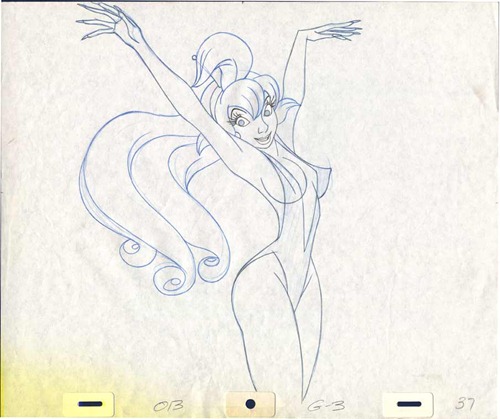
Images courtesy of Don Bluth Films
Thank you for your time! So, how did Don Bluth Productions originate?
It was 1973, about a year after I met Don working at Walt Disney Productions. We had been told when we were hired (Don in April ’71, me in February ’72) that the Nine Old Men would be retiring in the next 5 or 6 years. So, in a panic, we realised that we were only being trained to be animators, and realized that we would have to learn more about all the processes in the production of animation.
We didn’t even know what questions to ask. So we decided to make a short film in Don’s garage, in which we would surely cause questions to ask our mentors at Disney. We started with a project we called “The Piper”, based on a poem that Don’s brother, Toby wrote. Don had already purchased an editing bench and a moviola to watch and study 16mm copies of animated shorts you could buy, like Warner Bros and MGM cartoons.
We invested in building small animation desks and purchasing animation discs to animate with and folding tables, lamps pencils, paper, paint, brushes, etc – tools to do animation at the house and in Don’s garage. The first people involved were Don, Don’s brother, Toby, Dave Suding, an assistant animator, Dale Baer, an animator trainee, and me, an animation trainee and inbetweener. By mid-1973 we had quite a bit of our own time and money invested in the project, so we decided to protect the investment by incorporating.
We were paying for everything ourselves from tax returns and any freelance work we picked up on the side. We went to an attorney, incorporated, and called the company Don Bluth Productions, Inc. The name stuck, but some of those involved did not. Dave Suding and Dale Baer decided to not spend their time off working at the garage and at some point Don and Toby had a disagreement and Toby left.
John Pomeroy had joined the Disney organization in February of 1973. He impressed us with his drawing, knowledge and enthusiasm, so we invited him to come see what we were doing that summer, and he became part of our learning program.
In 1975 we felt that The Piper was too big of a project and came up with a simple short story to practice and learn our skills on, something we might be able to do in a couple of years (working nights and weekends). The story was called Banjo The Woodpile Cat. We started in March of 1975 and completed it in December of 1979 (four and a half years later).
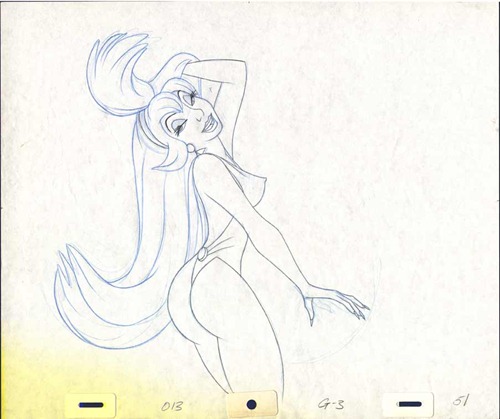
Images courtesy of Don Bluth Films
Was there a sense of dissatisfaction at Disney?
Not at that time. We were actually very enthusiastic about working at Walt Disney Productions, almost obsessive about it. Don had wanted to work there since he was very young – like by the age of nine (and did work there when he graduated high school in 1955 – on Sleeping Beauty as an assistant to John Lounsbery).
John Pomeroy had been inquiring with Disney about working there since he was 13 years old. Personally, I actually had hoped to be a panel cartoonist for newspapers like Leroy Holly, a family friend. After graduating from Art school, I met with Lee and he recommended that I go down to Hollywood and get a couple of years experience in the animation industry before I dove into the independent cartoonist world.
I showed my drawing portfolio at Walt Disney Productions and was hired into their animation program three days later. So I was not really a devout fan when I arrived. But, after about 6 weeks into the training program, animating my personal screen tests, they showed us trainees Pinocchio…I became an instant super fan. I couldn’t believe I was part of such a magical place. We all worked together at Disney during the day and in Don’s house and garage at night and weekends, training ourselves in all things animation.
During this period we were promoted regularly and were part of the animation team that made: Robin Hood (1973), Winnie the Pooh and Tigger Too (1974), The Rescuers (1977), Pete’s Dragon (1977), The Small One (1978) and went on to The Fox and the Hound in November of 1978.
It was during the production of Pete’s Dragon and The Small One that we lost our innocence, and realized that the management, at that time, had little respect for the quality of the films and wanted us to stop trying to recreate the production values of the past and encouraged us to cut corners and reduce the cost of production. They made our lives as leaders very uncomfortable. And, basically saw the artists as just the labourers to cobble together product for them to sell. Don stepped down as Producer/Director and asked to just animate.

Around the same time three ex-Disney executives contacted us to see if we would be interested in leaving Disney if they could raise money to finance a feature film. (we don’t know how they knew we were becoming disillusioned about our roles at Disney and with the company itself), but they were serious about this. They asked if we had a company? We did – Don Bluth Productions. They asked what film we would make if they could finance? We told them that story man/character designer, Ken Andersen had suggested that we read the Newberry Award-winning novel, Mrs. Frisby and the Rats of N.I.M.H., which we had, and that’s the book we would like to base an animated feature on.
Their investor asked if we had done anything on our own that wasn’t made at Disney? We had Banjo, which was all animated and about 70% in Color, which we showed him. With that, he agreed to finance our first feature and to pay for the completion of Banjo. With that commitment, Don, John Pomeroy and I resigned our positions at Disney on Don’s birthday, September 13, 1979. The following day, 8 more animators and assistants who were working nights and weekends with us, resigned, and over the next three months another 6 came out to join the group.
Don Bluth Productions, Inc. was now a funded company, and from September 13 to December 19th of 1979 we worked seven days a week to complete Banjo the Woodpile Cat and get it into two theatres for one week before the end of the year for Academy consideration in the “Short Film” category. In January of 1980 we began pre-production on The Secret of N.I.M.H. Banjo went to sleep for the next two years before it was shown on America’s ABC network as a primetime special.

Who were the founding members?
The founding members officially were Don Bluth, and me, however at the time of our departure from Disney, it was us, and John Pomeroy. We had a forth founding partner, Mel Griffin, who was to be the businessman of the company. In August of 1982 we mutually agreed his departure from the company.
The company operated as Don Bluth Productions until early 1984, when, in the middle of production of our third video game, Dragon’s Lair II: A Time Warp, our distributor shut down the cash flow which put Don Bluth Productions in jeopardy of bankruptcy with an outstanding debt of $300,000. In order to fight the disruption of the revenue flow, we had to go into bankruptcy court to resolve it. We had formed a second company Bluth Group Ltd to be the partner with the distributor and that company had to do the same. Finally, in 1988, we won the lawsuit but in the middle of the 4 year court case, Don Bluth Productions had to go into Chapter 7 and be dissolved.
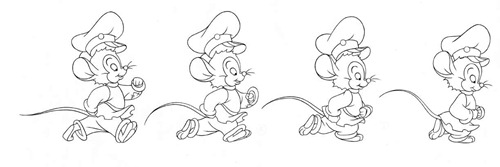
We found another business partner, Morris Sullivan, who set up a company, Sullivan Studios, Inc., with which we produced An American Tail and The Land Before Time with Steven Spielberg and Universal Pictures. We moved that company from Van Nuys, California to Dublin, Ireland with 87 of its talented staff (and their families) in November of 1986, and in 1987 the name of the company became Sullivan-Bluth Studios, which grew to a staff of 400. And, in 1990 we changed the name to Don Bluth Entertainment.
In 1992 the company again found itself in bankruptcy court, and this time the company was sold. Don and I produced and directed for the new company which continued the company with the name Don Bluth Entertainment, but we did not own it. In late 1993 Don and I were contacted by Bill Mechanic who was being recruited by News Corp from the Walt Disney Company to take on the Chairmanship of 20th Century Fox. He told them he would take the job if he could start a feature animation division. They called on us to help them start the new company Fox Animation, Inc.
In August of 1994, Fox moved us to Phoenix, Arizona where a 66,000 square foot building was remodelled for animation production. We ran Fox Animation as its producer/directors for 6 years. In 2000 we incorporated the name Don Bluth Films, Inc. and have been developing feature film properties and contracting to produce and direct a few short subjects in animation. We are currently seeking funds to put new feature-length properties into production.
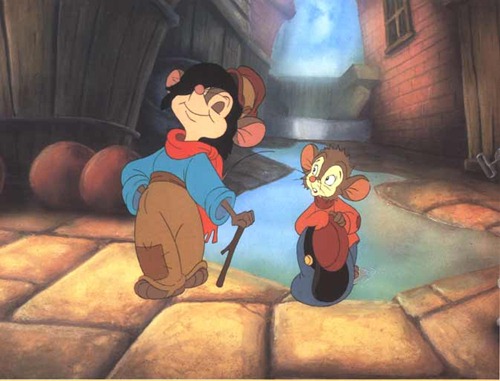
Images courtesy of Don Bluth Films
How many people make up the studio today?
Just a few, for development only, plus we contract out to ex-employees.
How has it been over the years to work with Don Bluth and John Pomeroy?
We are close. More like brothers. Don is still full of passion for animation and has the energy of three people. John went back to Disney in 1993 and worked there for 10 years. He is still a partner in Bluth Group Ltd, which owns all rights to the three video games and are still sold on DVD and Blu-ray and are playable using the remote of a DVD player.
The games are being reprogrammed now for an iPhone/iTouch devices, to be available on the Apple Apps store. John continues in the industry as a storyboard artist and an animator. We went through a lot of bumps and hardship in our journey to bring back the production values we felt were important to the art of animation.
We just remastered Banjo the Woodpile Cat, digitally cleaning it up for its DVD premiere on its 30th Anniversary with a double disc package including 90 minutes of bonus features. It’s on amazon.com. And, Don is now creating animation tutorials on DVD and has set up a donbluthanimation.com site where students and aficionados of animation may buy these informative lessons in animation.
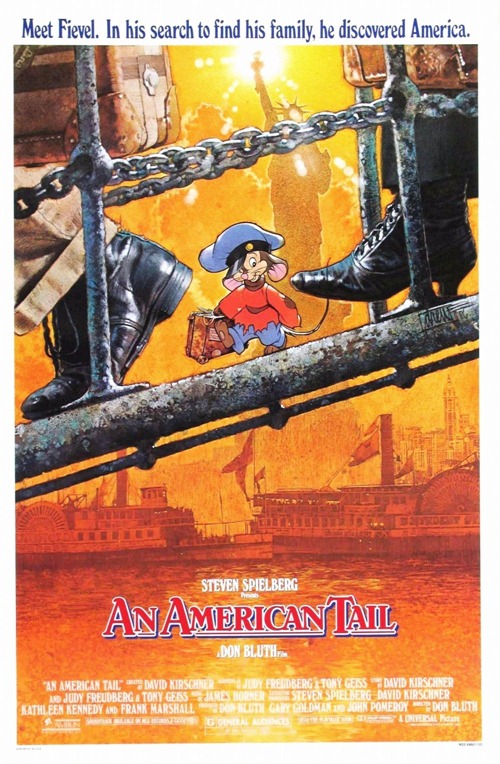
What have been the biggest hits for the studio?
Probably An American Tail, The Land Before Time and Anastasia, but then, The Secret of NIMH, All Dogs Go To Heaven & Thumbelina seem to have sold a lot of DVDs worldwide and have a large fan base.
Why has the studio not made sequels to its films?
We haven’t been real interested in sequels. Once we’ve told the story, we’re ready to move on to the next new idea.
Why have other studios instead?
Probably because they had the right and didn’t have a better idea.
Is traditional animation on the decline?
Decline? With the exception of TV series and commercials, traditional animation has been dead since the release of Home on the Range in 2004. However, there is a market for it. It’ll have to be a great story with great appeal and be made at a much lower cost than the CG animated features. We plan to be part of its resurgence.

All Dogs Go To Heaven was beaten at the box office by Disney’s The Little Mermaid, although it later became a hit on home video and is considered a cult classic. Did the studio ever consider compromising and making more mainstream films to win box office success?
Compromise? Not really sure what compromise you are referring to! We compromised a lot with The Land Before Time. Cuts were made while we were in production and even more were made after we delivered the film to make it a kid friendly G-rated film. The same happened to All Dogs and to A Troll in Central Park.
Sometimes the financing entity and/or the distributing studios demand a say-so in the final product.

Images courtesy of Don Bluth Films
Will All Dogs Go To Heaven ever be released as a directors cut with added footage/ original aspect ratio, remastered picture and sound?
No. The footage that was cut, was discarded, not saved. The drawings were not archived. Goldcrest Film and Television actually refused to store the original art (drawings) and, I believe most of the cells and backgrounds were destroyed or taken to the dump in the UK. They said that it cost them “too much” for adequate temperature & humidity-controlled storage.
Also, most of our films were originally shot in 1:1.33 which is 4 X 3. The top and bottom of the frames are “clipped” in the theatre projectors to present a 1: 1.85 image on the screen. So, those original VHS tapes and the first DVDs were presented in the original 1:1.33 format, mainly because the home viewing audience thought something was wrong with the tape or their TV when the image had black across the top and bottom, letterboxing the image to 1:1.85.
The home audiences now understand the difference and most of the new DVDs have been reformatted to fit the 16X9 measurement of the flat screen TVs. Still, this means that some of the original art has been clipped or cut off. We just re-mastered our garage project, Banjo the Woodpile Cat and we gave the viewer a choice of 4 X 3 or 16 X 9, to accommodate the new TV screen size.
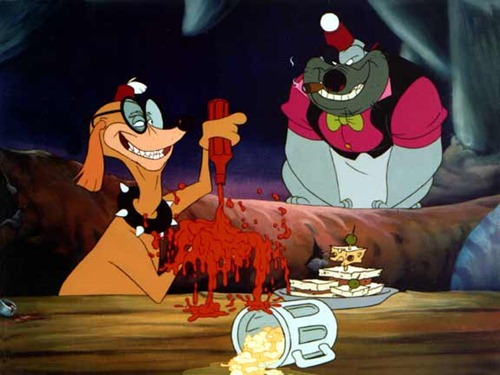
Images courtesy of Don Bluth Films
Has the studio considered the above for their other back catalogue with the event of Blu-ray? All Dogs for example?
We do not know. Goldcrest has been fairly secretive with regards to marketing the DVDs, we are never asked for our input.
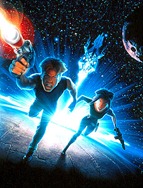 Did Titan A.E damage the studio with its poor box office performance?
Did Titan A.E damage the studio with its poor box office performance?
I’d have to say yes. But more damaging than the film’s performance was the lack of marketing by Fox. They abandoned the film after the first weekend, refusing to advertise the film after only bringing in $9.8 million on its opening weekend.
What do you think of this film personally?
We’re not ashamed of the film. There was a lot of talent behind that film, with about 14 top writers from the sci-fi genre, including Josh Whedon and John August. The problem was that for 18 months the film was in production with another director and producer. They had spent $30M and ended up with little except quite a bit of pre-production artwork.
We had to start over and were given a $55M budget to get it done. The schedule was condensed to 19 months, in order to meet the budget requirements, plus we had to battle with the creative execs at Fox as we raced to the finish line. Not fun filmmaking. But, in the end the crew was pretty proud of their accomplishment. Strange but that’s a film that also has gained a cult DVD audience. See fan reviews on amazon.com.
Did this cause problems with 20th Century Fox?
No. They had decided about half way through the Titan A.E. production to give up 2D animation and concentrate on CG movies, which they could have easily converted the Phoenix facility to do (and everyone knows that traditionally trained animators make the best CG animators).
There were also issues between New Corp management and 20th Century Fox senior management. We were the collateral damage, us and 314 animation staffers.
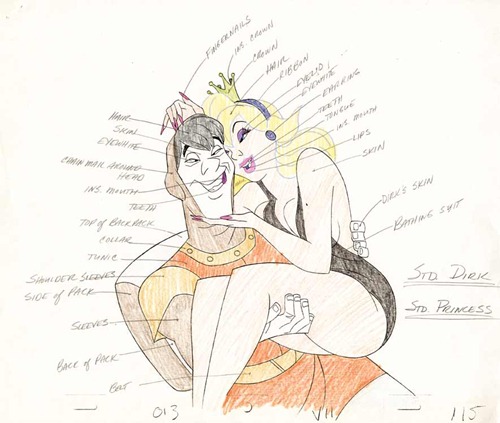
Images courtesy of Don Bluth Films
How did the studio come to animate for the Scissor Sisters?
The band contacted us and asked if we could do something that would be similar to what we had done in the film Xanadu (1980). We said yes. We discussed and agreed the entire approach with their live action director. We story boarded the animation portion, and it was approved. It was going to be a fun project.
Then, they lost their original live action director and a new director was selected. This live action director changed the idea for the live action and the final product truly baffled us. We felt that the animation no longer made sense.
Originally, the live action girl was to have a job that she hated – in an old building where it was dull and unexciting, almost sweatshop conditions. And, she lived in a tiny bed-sit with a shared bathroom that was in need of repair and paint. A life not envied nor enjoyed. The idea was that she was to feel trapped in her situation, like Rapunzel in her tower, hence the approach to her dream in animation. Needless to say, the final product does not reflect that concept.
What other studios do you look to with respect? (Pixar? Ghibli?)
Yes to both. And add Aardman Studios and Nick Park to those. We also liked the work that the Australian company, Animal Logic did, and George Miller’s direction on Happy Feet.

Images courtesy of Don Bluth Films
What is the studio working on at the moment?
Some books, and also a Dragon’s Lair adaptation for the iPhone and iTouch devices at the Apple Apps store. We are working on several things, Don is concentrating on the creation of DVDs which will have animation tutorials from the very basics of traditional classical animation to the advanced approach to storyboarding, layout and complex animation. There is to be six major areas of tutorials with six separate DVDs on each subject. These are digitally shot with Don himself demonstrating with drawings how he approaches each challenge.
We are working on the third book, The Art of Character Design. And, we’re in development of eight (8) feature-length animated films, plus seeking financing for those and the purchase of a popular book series for future feature films.
Thank you for your time!

Special thanks to Gary Goldman, Kip Goldman and Don Bluth.












All Dogs Go To Heaven is still one of my favourite films of all time. It was a real privilege to be able to speak with Gary about that film in particular during our interview… what a shame that the original cells etc were destroyed 😦
Pingback: The original version of the land before time was too scary for kids - media today
Pingback: The Original Version Of The Land Before Time Was Way Too Scary For Kids
Pingback: The Original Version Of The Land Before Time Was Way Too Scary For Kids – NBC NEWS
Pingback: The Original Version Of The Land Before Time Was Way Too Scary For Kids - Best App
Pingback: The Original Version Of The Land Before Time Was Way Too Scary For Kids - News360World